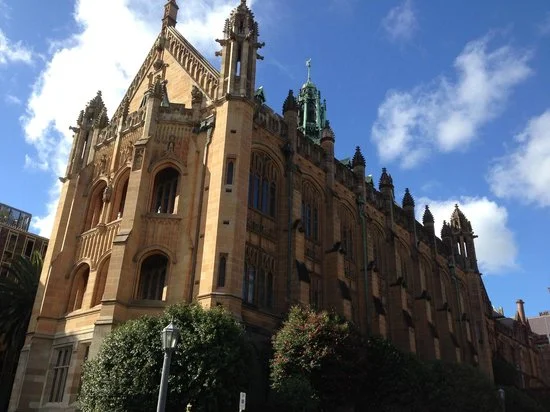The spires of MacLaurin Hall tower over the University in the distance.
It’s a sultry March Sunday.
Kids no more than 12 years old, with shirts, on which the University badge sits proudly, are kicking soccer balls on the Arena. Undergraduates of the future? Here is hope.
A year ago, Sydney University CC met Sydney CC in the 1st Grade semi final on this same ground on the same weekend. A year ago, University won by 298 runs after batting well into Sunday, having faced almost 124 overs. That’s history but today, University again bats into the 124th over.
The riches of history and the hopes of the future rhyme in peaceful surrounds on a pulsating afternoon.
This time last year, Larkin, Cowan, Joy and Neil-Smith all played with distinction. Last year, Trevor-Jones, McElduff, Walker and Kershaw were all elsewhere. This time, they are all part of a hopeful side that struggles manfully throughout an innings that yields little more that 2 runs per over. Four batsmen each face 120 balls or more.
Last year, Sydney failed by 298 runs.
This year, they pepper the boundaries and beyond. 11 sixes clear the ropes and sometimes the fence. Until…20 to win. 9 balls to bowl. One wicket to take. It’s dark. It’s raining. Umpires intervene. No more play.
But something gnaws away at me.
One year ago, the cricket world was turned upside down. Overnight, news had seeped through that Australian cricketers had been caught in a ball-tampering incident. The incident became a scandal. The scandal became a shame. This incident traduced the very values and traditions of a game which we love. There was a pall over the ground a year ago as we watched a more innocent version of our game that owes so much to those in whose history it treads.
So much of the future looked bleak.
So look up at MacLaurin Hall again.
This is the stuff of history.
Henry Normand MacLaurin is remembered at Gallipoli by a landmark called ‘MacLaurin’s Hill’.
But this is not the MacLaurin that the Hall is named after.
HN MacLaurin was a highly successful barrister, active in the militia forces when he enlisted on 15 August 1914, almost as soon as the Great War was declared. He had played two seasons for Sydney University CC. In 1896-97, after scoring only 44 runs at 7.3 in 2nd Grade, he was inexplicably promoted to 1st Grade (1st Grade cap number 53) where he played another two games without distinction. In the season when the Club was readmitted on humbling terms to the Grade Competition in 1898-99, MacLaurin was selected in 1st Grade twice more. An energetic 54 was followed by a non-descript 5 and he played no more.
His father, Sir Henry Normand MacLaurin (1835-1914), a Scotsman, was Chancellor of the University of Sydney from 1896 until his death.
The Hall that peers down on the cricket ground is named after the Chancellor.
His second son graduated BA in 1899 and was admitted to the NSW Bar. When he enlisted in the AIF, he was immediately appointed Lieutenant Colonel, commanding a force of 4000 men.
He stood up for his men, attacking those civilians who were ‘doubtful and dissatisfied and critical’. Their accounts were ‘false and malicious’. Although he was a stern disciplinarian, he had a fine reputation among his men who respected his energy and enthusiasm especially when they trained under him in Egypt.
When orders of the landing at Gallipoli came through, MacLaurin was said to have ‘happily cancelled his leave and bounded smiling up the stairs to the General’s office to plan the attack.’
During the afternoon of 27 April 1915, at about 3.15 pm, MacLaurin ‘was standing on the slopes of the ridge that now bears his name… in the act of warning soldiers to keep under cover when he too was shot dead…MacLaurin was buried by his men where he fell.’
He was the first of the Club’s former players to be killed.
That’s history. Our history.
But look up at MacLaurin Hall.
That’s his father who ruled the University with great vision.
And experience that old building standing sentinel while generations beneath it play this noble game.
The future is now bright.
The tidal wave rises up, where hope and history rhyme.
James Rodgers

